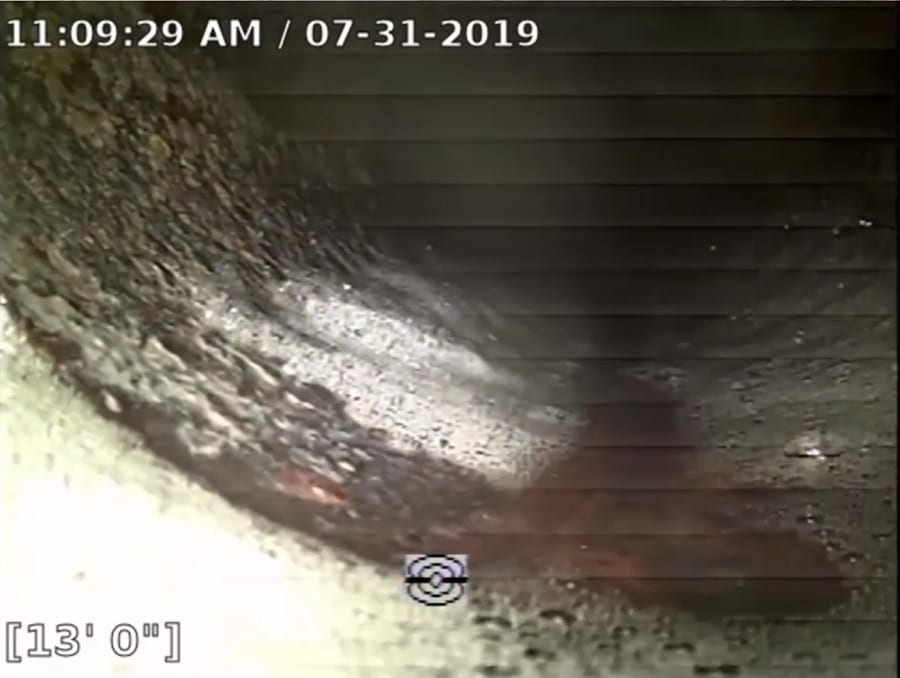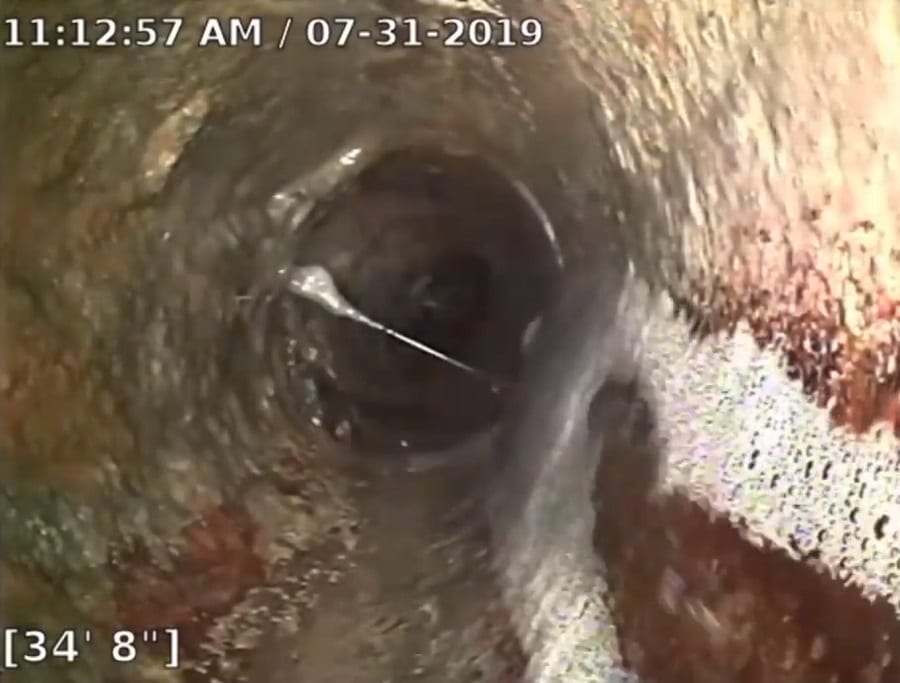Sewer Camera Inspection via CCTV Survey for Environmental Investigations
A sewer camera inspection is the use of special equipment that advances within a subsurface pipe in order to gather video or visual data in real time. Sometimes, a sewer camera inspection becomes part of the environmental assessment process in order to discover subsurface contamination points. To illustrate, plumbing technicians perform sewer pipe video services using CCTV survey technology. This helps obtain an accurate understanding of the conditions of sewer pipes and laterals. First introduced in the 1960s, this technology has advanced incredibly. In fact, modern technologies, such as high-resolution zooming capabilities and wireless signal transmission are helping geophysicists produce better environmental data. In addition to the traditional visual cameras, the use of infrared, sonar, ultrasonic sensors, and laser scanning techniques are now available. Updated April 11, 2024.
Sewer Camera Inspection of Public Sewers
Most metropolitan cities comprise wastewater agencies that maintain the public sewage system. For instance, cities like Los Angeles, San Francisco, and Houston maintain their own public wastewater network, which each comprise up roughly 7,000 miles of public sewer lines. In fact, the Los Angeles Sanitation and Environment Department (LASAN) manages one of the largest wastewater collection and treatment systems in the world. And this agency implements a comprehensive Sewer System Management Plan (SSMP) to ensure that the entire network is functioning properly at all times. The system includes close to 3,000 miles of sewer lines undergoing sewer inspection every year. This is part of the City’s Sewer Condition Assessment Program (SCAP). Although, it is the high-priority tasks that require sewer camera inspection using closed-circuit television (CCTV) techniques.

Types of Video Sewer Inspection
Modernly, sewer camera inspection services use CCTV. The assembly comprises a waterproof camera that mounts on the end of a flexible rod or a remote-controlled vehicle. Both systems allow smooth and easy advancement through sewer pipes. Initial entry usually occurs at a sewer clean-out, or accessible port above the ground surface. The camera faces forward and captures images of the underground pipe as it moves along. The video footage is then transmitted in real-time to a monitor for viewing and digital recording.
Another available technology utilizes digital scanning, whereby a 360-degree fisheye scanner advances through the sewer in a similar fashion. Rather than the forward-facing imagery of the CCTV camera, the digital scanner can capture side scan images of the inside of the pipes as it pushes through the sewer line. When performing a video sewer inspection, the fisheye lens is typically a geologist’s preference. This is because it is easier to identify cracks within the piping, as opposed to a CCTV sewer pipe video.
Sewer Pipe Video on Private Property
Property owners are always responsible for maintaining the sewer laterals which connect to the public mains. It is important to monitor the condition of all sewer laterals in order to ensure that wastewater reaches the public network. Otherwise, the wastewater ends up leaching into the subsurface, potentially causing environmental violations. A sewer camera inspection, as well as other geophysical survey methods, are periodically necessary to ensure all onsite wastewater transport and clarifier systems are operable. The major concern to be assessed during the sewer camera inspection or CCTV survey is the integrity of the sewer piping itself. If there are any breaks in the line due to tree roots, offset joints, cracks, or other discontinuities, the result can be wastewater pollution.
Wastewater and Contamination
Businesses that work with hazardous materials have an especially important obligation to ensure their sewer laterals are intact. Because some toxic chemicals are denser than water, they sink to the lowest point in the sewer line. As a result, if there is a break in the line, the denser chemicals traveling along the bottom of the line will be the first to leak out. This is often how an environmental release occurs at industrial sites. and a sewer camera inspection can be used to locate the damage and subsequent point of release.

When to Use Sewer Camera Inspection Technology
A sewer camera inspection is often utilized during a Phase 2 Environmental Site Assessment or an environmental remediation project. The motives are to determine whether there’s damage to wastewater lines containing hazardous materials. These information aid geologists in determining the location of chemical releases into the subsurface. And as a result, geologists then know where to focus the remedial action. A video sewer inspection in conjunction with ground-penetrating radar (GPR) as part of a geophysical survey aims to fully delineate a sewer lateral network, as well as other subsurface conditions. Additionally, a sewer camera video survey can be part of a Property Condition Assessment (PCA) in order to evaluate subsurface sewer pipe conditions.
Information Sources:
Federal Department of Homeland Security – CCTV Technology
Review on CAD Sewer Pipeline Defect Detection and Condition Assessment
United States Environmental Protection Agency – Sewer Inspection Facts
